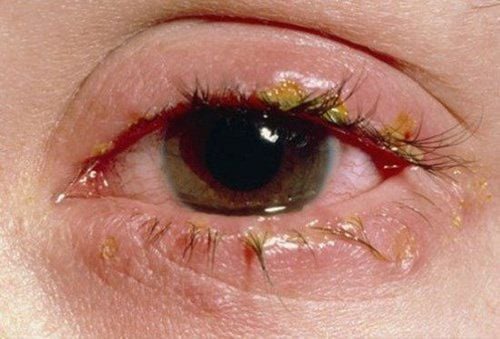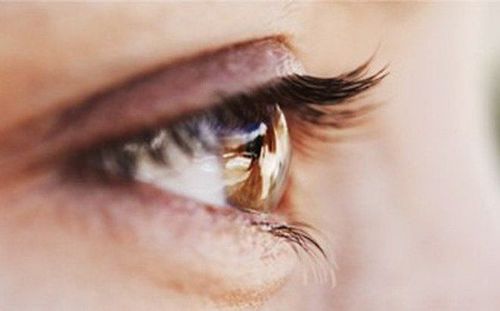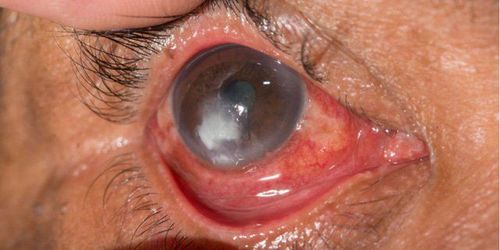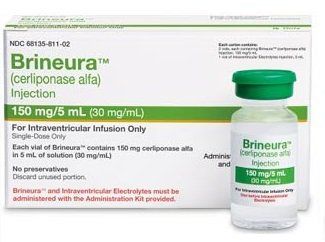This is an automatically translated article.
The article was professionally consulted by an eye doctor - Department of Examination & Internal Medicine - Vinmec Hai Phong International General HospitalFungal keratitis is a condition in which the cornea is damaged, the corneal epithelial layer is lost, accompanied by fungal infection of the corneal parenchyma or endothelium. Corneal ulcers, if not treated in time, can cause serious problems, loss of vision and even blindness.
1. What is a corneal ulcer?
Fungal keratitis is an infection of the cornea, which is a loss of the epithelial layer, accompanied by fungal infection of the corneal parenchyma or endothelium.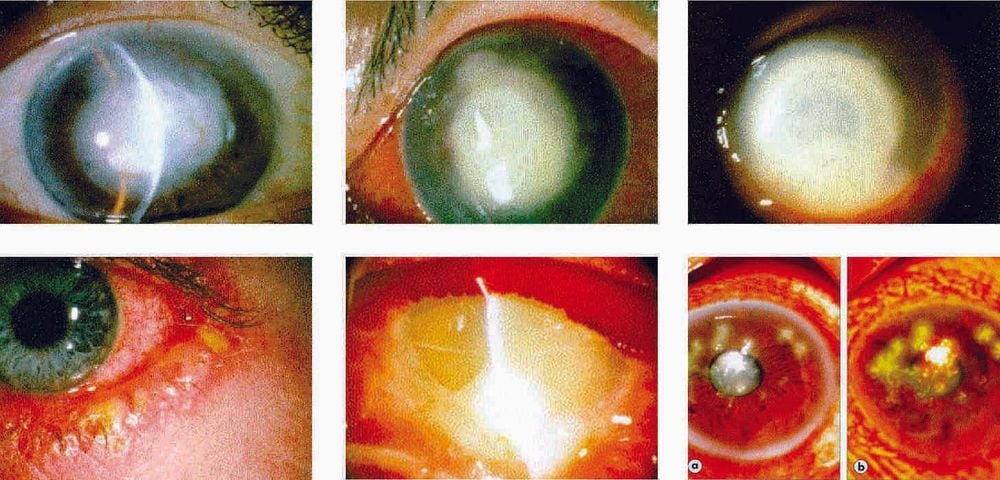
Một số hình ảnh viêm loét giác mạc
2. Diagnosis of fungal keratitis
Fungal keratitis usually occurs after an traumatic event such as dust in the eye, twigs or leaves in the eye. Patients experience eye pain, red eyes, glare, fear of light, watery eyes, and blurred vision.On physical examination, the typical picture of fungal keratitis is a round or oval ulcer with well-defined boundaries, the base of the ulcer is often covered with a thick, dry and crusted necrotic layer on the corneal surface. . The location around the ulcer has a bunch of gonorrhea like cotton in the corneal parenchyma... The amount of pus in the anterior chamber increases and decreases abnormally.
To accurately diagnose fungal keratitis, your doctor may scrape the eye gently to take a sample of the lesion on the eye and do a test for fungal cells. There are many methods of subclinical diagnosis such as fresh scan, direct endoscopy, plant identification, ELISA technique, PCR technique,...
Fresh screening: For quick results, determining whether there is a fungus or not, but only filamentous fungi are difficult to detect. Direct examination: The commonly used techniques for fungal diagnosis are: Gram staining, methylene blue single staining, Giemsa staining, P.A.S staining. Cultivation to identify fungal species: Most of the fungi that cause corneal ulcers have grown within 2-3 days, but there are also cases where it takes 5-7 days for the fungus to grow. Sabouraud agar with antibiotic gentamycin or chloramphenicol at temperature < 30 degrees Celsius is a suitable environment to grow mushrooms. To identify pathogenic fungi must be based on macroscopic, microscopic observations and physiological properties of the fungus after being cultured on the medium.

Chẩn đoán viêm giác mạc do nấm bằng soi tươi
3. Treatment of fungal keratitis
Antifungal antibiotic treatment: topical and systemic (eye and oral)Specific antifungal drugs 2 commonly used groups are:
Polyenes: natamycin, ketoconazole, Fluconazole... when the disease is advanced, it can be used. 6-8 weeks Systemic antibiotics used in severe cases: need to use itraconazole, ketoconazole for at least 3 weeks (pay attention to monitor liver function) Adjunctive therapy:
Antibiotics, non-steroidal anti-inflammatory drugs in the eye of the superinfection room. Pupil dilation with Atropin 0.5-1% for the purpose of anti-adhesion, pain relief due to spasm of the ciliary body. Corneal nutrition: When the corneal ulcer begins to subside, and the corneal epithelium begins to heal.
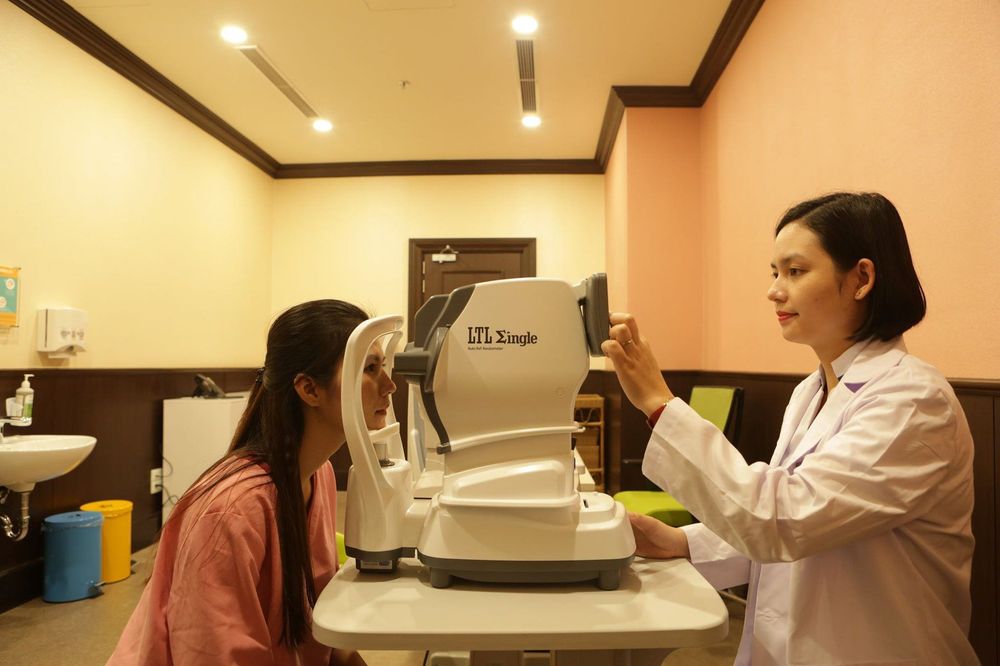
Khi bị viêm giác mạc do nấm, người bệnh nên khám chuyên khoa mắt
Corneal epithelium Dredging the base of the ulcer or the surface of the cornea Removing the cornea or even corneal transplantation depending on the condition and severity of the disease. In general, the treatment of fungal keratitis often requires the patient to be very active and persistent. The goal of treatment is to resolve the causative agent, and the eyeball is preserved after treatment.
Complications of fungal keratitis are severe, such as corneal necrosis or perforation. Therefore, prevention is very important.
Need to be careful in living and working to avoid eye injuries. When traveling or working, you should wear safety glasses. Absolutely do not rub your eyes, when there is dust or grit flying into your eyes because doing so will cause scratches and tears on the cornea. In particular, some people who use contact lenses need to be careful in wearing and removing, storing and cleaning glasses regularly to reduce the risk of fungal growth. In a nutshell, fungal keratitis is an infection of the cornea. Early diagnosis is essential and important. If the condition is mild, the person may only have to use medication. If drug treatment is not effective, surgery may be required. In some cases, corneal surgery will not restore vision and cause permanent vision impairment, even blindness. Therefore, when you see any first signs of infection, you should immediately go to a medical facility with an eye specialist for an examination.
If you need detailed advice about the disease, please go directly to Vinmec health system to be examined or book online HERE.
Please dial HOTLINE for more information or register for an appointment HERE. Download MyVinmec app to make appointments faster and to manage your bookings easily.




